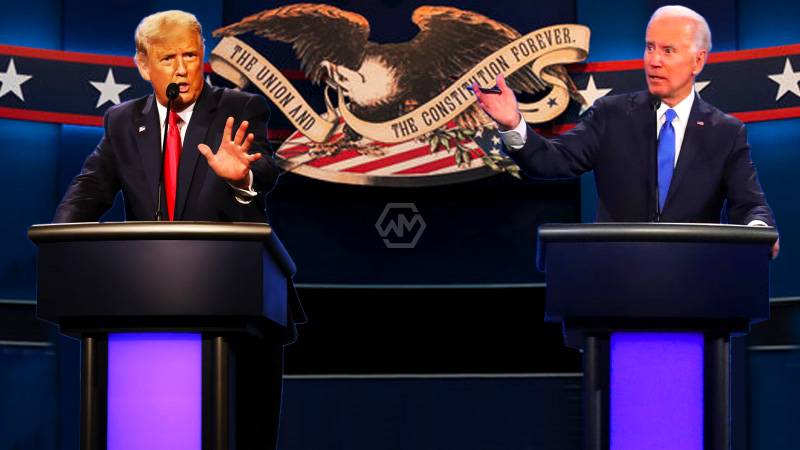- Constant interruptions and heated exchanges.
- Personal attacks and controversial comments.
- Commitments (or lack thereof) regarding election results.
The first debate between Joe Biden and Donald Trump in 2020 was notorious for its chaotic nature, with Trump frequently interrupting Biden and moderator Chris Wallace. The discussion quickly devolved into shouting matches, particularly over topics like the Supreme Court vacancy, healthcare, and the handling of COVID-19.
Personal attacks were a prominent feature, with Trump mocking Biden’s intelligence and attacking his son, Hunter. A significant moment was Trump’s response to condemn white supremacists, where he told the Proud Boys to “stand back and stand by,” a comment that sparked widespread criticism.
Chaos and Clashes: Biden and Trump’s First Debate
The first Biden-Trump debate in 2020 was marked by incessant interruptions and personal jabs. Trump’s strategy seemed focused on disrupting Biden, leading to a breakdown in the debate’s structure and order. The chaotic atmosphere made it challenging for substantive discussions to take place, especially on critical issues like healthcare and the pandemic.
Trump’s refusal to explicitly condemn white supremacist groups when prompted, opting instead to address the Proud Boys with “stand back and stand by,” drew significant backlash. Biden, attempting to maintain decorum, expressed frustration but also managed to highlight his policy differences from Trump. The debate concluded with Biden affirming his commitment to wait for certified election results, contrasting sharply with Trump’s ambiguous stance on election integrity.
The debate’s impact extended beyond the immediate performance, as it underscored the polarized nature of the 2020 election. Trump‘s aggressive tactics and Biden’s responses became focal points in media coverage, influencing public perception. The contentious atmosphere reflected the broader political climate, characterized by deep divisions and heightened tensions.
Efforts to avoid a repeat of such chaos have led to new rules for the upcoming debate, including muted microphones to prevent interruptions. Both campaigns have agreed to these changes, aiming to ensure a more structured and substantive exchange. The lack of a studio audience is also intended to minimize distractions and maintain focus on the candidates’ responses.
Looking ahead, the upcoming debate will test whether these new measures can create a more civil and informative environment. The candidates’ ability to adapt to these rules will likely shape the overall tone and effectiveness of the debate. Voters will be watching closely to see how Biden and Trump address key issues without the overshadowing interruptions and personal attacks of their previous encounter.
The changes implemented reflect a broader desire for a more respectful and productive political discourse. The success of these measures may influence future debates and set new standards for political engagement in the US.
The upcoming debate between Biden and Trump offers an opportunity for a more orderly and substantive exchange, thanks to new rules designed to minimize interruptions and distractions. This will be a critical moment for both candidates to clearly articulate their visions for the future.
“Will you shut up, man?” – Joe Biden’s exasperated plea during the first 2020 debate encapsulated the chaotic nature of the encounter, marked by constant interruptions and personal attacks.



